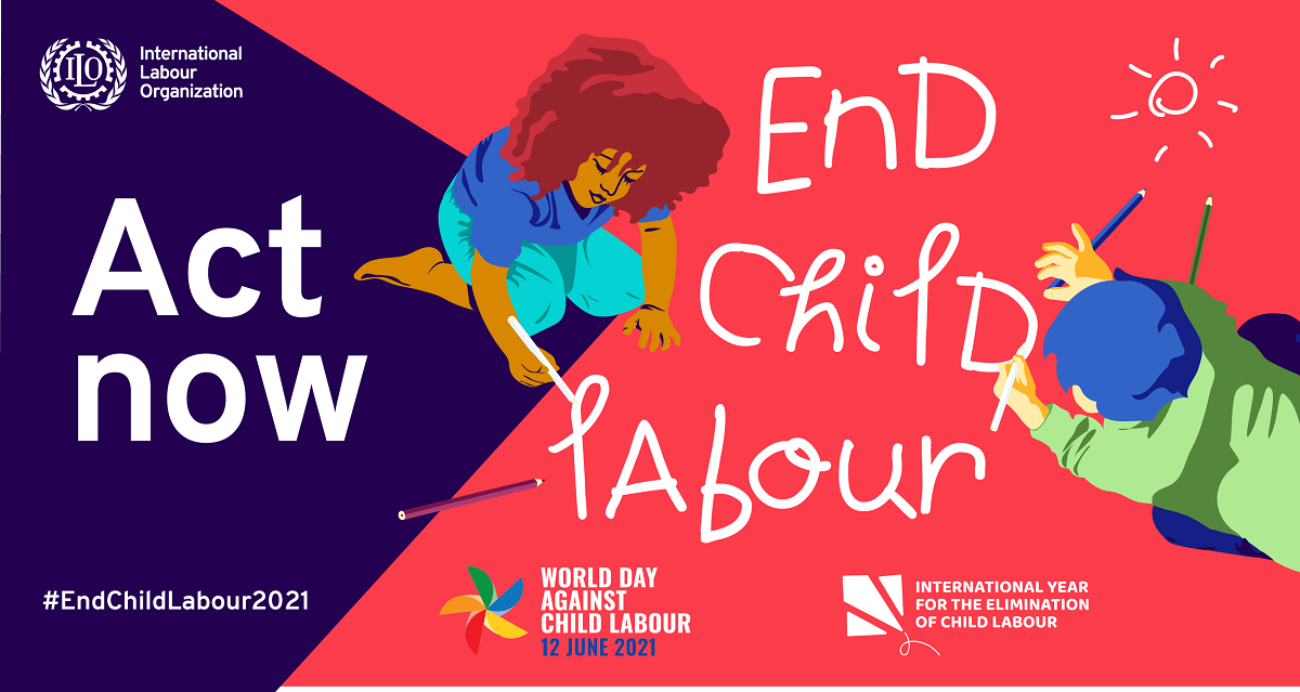
This week the ILO revealed its latest global estimates on child labour in a new report released ahead of World Day Against Child Labour on 12 June 2021. The number of children in child labour has grown to 160 million worldwide, an increase of 8.4 million children in the last four years with millions more at risk due to the impacts of COVID-19. The report stresses that progress to end child labour has slowed down for the first time in 20 years, reversing the previous downward trend that saw child labour drop by 94 million between 2000 and 2016. The report also warns that globally, nine million additional children are at risk of being forced into child labour by the end of 2022 because of the pandemic. A simulation model shows this number could rise to 46 million if they don’t have access to critical social protection coverage.
Other key findings in the report include:
- The agriculture sector accounts for 70 per cent of children in child labour (112 million) followed by 20 per cent in services (31.4 million) and 10 per cent in industry (16.5 million).
- Nearly 28 per cent of children aged 5 to 11 years and 35 per cent of children aged 12 to 14 years in child labour are out of school.
- Child labour is more prevalent among boys than girls at every age. When household chores performed for 21 hours or more each week are considered, the gender gap in child labour narrows.
- The prevalence of child labour in rural areas (14 per cent) is close to three times higher than in urban areas (5 per cent).
At Impactt we continue to work tirelessly with our clients to identify and address instances of child labour in their supply chain in a considered and responsible way. Working with 90 multi-stakeholders, we’ve developed the Child Labour Operational Procedures (CLOP), a step-by-step guide on how to deal with instances of child labour in the industrial context. Additionally, we’ve also developed a detailed working guide on child labour remediation.
The Impactt approach
With a strong focus on children’s welfare, we develop insight into each child’s needs and aspirations, we seek their parents’ view, and develop effective solutions. We select appropriate schooling, negotiate financial support and monitor the child’s development over time. Sensitive to the fact that the child may be working to support their family, we endeavour to relieve pressure on the family’s finances by providing a monthly stipend. In addition to compulsory academic education, we help former child workers fulfil specific aspirations by helping them undertake vocational courses in topics including IT, accounting, childcare, teaching and beauty. To date Impactt has successfully remediated over 200 ex-child workers worldwide.
“The whole family have been impacted by this project. After my daughter joined the kindergarten course, her older sister who was very resistant to study, also joined a beauty course in a hair salon. This has really changed our idea of work and the future.” – Mother of ex-child worker in China
Age verification assessments
We have found children working in a wide range of sectors including toys, footwear, garments, electronics and accessories. However, we find that factory audits, though good at identifying some issues, often don’t detect child labour. As a result, Impactt developed a methodology fully focused on understanding whether child labour is present on site or not, we refer to these as age verification assessments. The objective of the age verification assessments is to understand the effectiveness of recruitment and on-boarding management systems and identify if underage workers are on site.
During the assessment Impactt completes a thorough analysis, cross-checking multiple sources to gather genuine information about how workers are recruited, how workers’ age is verified and which measures the site takes to prevent hiring underage workers. A key element of the assessment is verifying ID documentation of workers. Depending on the size of the workforce, Impactt will either review documentation of all workers or a sample of high-risk workers. Impactt’s team is very experienced in distinguishing fake from genuine ID documentation and establishing true ages of workers. First and foremost, Impactt’s team always focuses on establishing trust with workers.
Improving management systems
There are many reasons why underage workers are employed. Mostly these are linked to weak hiring systems. These systems are particularly under pressure in times of production ramp up and high worker turnover. We develop capacity building programmes for factories that helps management to build robust systems to ensure gradual and sustainable improvements to their management systems and in particular, their recruitment practices.
“Before this training, we did not believe we would employ any child labour. When we hire, we mostly focus on workers’ skills. With the Impactt team’s support, we’ve set up a comprehensive age verification process and now can check applicant’s IDs carefully. We continue to carry out regular reviews of our age verification process.” – Factory Manager in China
Preventing child labour in future
To reverse the upward trend in child labour, brands and retailers need to understand the risks of child labour in their supply chains and eliminate root causes. Brand and retailers must conduct proper due diligence to try and determine the labour conditions in the factories from which they source from and be prepared to act should they encounter it. At Impactt we work closely with our clients to identify and remediate any cases of child labour placing an emphasis on the importance of focusing on creating positive change in the lives of these children and their families.



